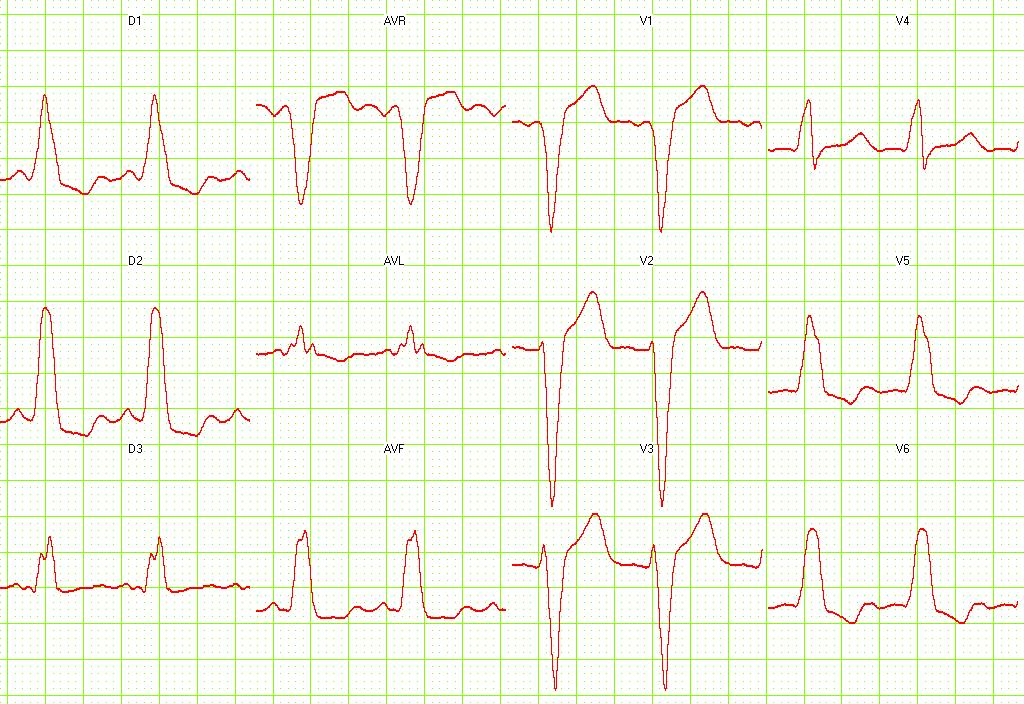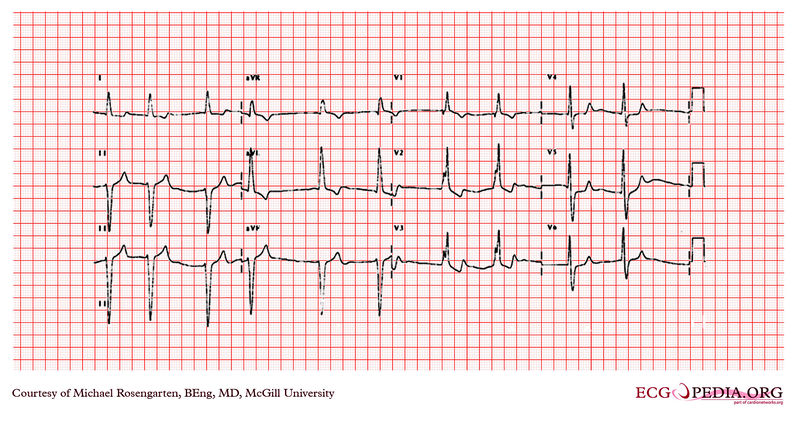Intraventricular conduction delay EKG examples
|
Intraventricular conduction delay Microchapters |
|
Differentiating Intraventricular conduction delay from other Disorders |
|---|
|
Diagnosis |
|
Treatment |
|
Case Studies |
|
Intraventricular conduction delay EKG examples On the Web |
|
to Hospitals Treating Intraventricular conduction delay EKG examples |
|
Risk calculators and risk factors for Intraventricular conduction delay EKG examples |
Editor-In-Chief: C. Michael Gibson, M.S., M.D. [1]; Associate Editor(s)-in-Chief: Mugilan Poongkunran M.B.B.S [2]
Overview
A narrow QRS complex requires highly synchronous electrical activation of the ventricular myocardium through the rapidly conducting His-Purkinje system (HPS). and intraventricular conduction delays (IVCDs) affects the morphology or duration, or both, of the QRS complex. These changes can be fixed and present at all heart rates, or they can be transient aberration either tachycardia or bradycardia dependent.
EKG Examples
Left Bundle Branch Block
Shown below is an EKG with an RsR' pattern (M pattern) in leads III, aVL, aVF, and notching of the QRS complex in V5 depicting a left bundle branch block. Wide QRS complexes are seen throughout the EKG.

Copyleft image obtained courtesy of ECGpedia, http://en.ecgpedia.org/wiki/Main_Page
Right Bundle Branch Block
Shown below is an EKG with an rSR' pattern in leads III, aVR, aVF, V1, V2, and V3 depicting a right bundle branch block.

Copyleft image obtained courtesy of ECGpedia, http://en.ecgpedia.org/wiki/Main_Page
Left Anterior Fascicular Block
In LAFB the anterior part (fascicle) of the left bundle is slow. This results in delayed depolarization of the upper anterior part of the left ventricle. On the ECG this results in left axis deviation. The QRS width is <0.12 seconds in isolated LAFB.

Copyleft image obtained courtesy of ECGpedia, http://en.ecgpedia.org/wiki/Main_Page
Left Posterior Fascicular Block
Shown below is an EKG showing sinus rhythm, with a wide QRS and a right axis deviation. The S1 Q3 pattern suggests an isolated left posterior fasicular block. One should also consider right ventricular hypertrophy, but in this case there is no sign of right atrial abnormality, and his echocardiogram was normal.

Copyleft image obtained courtesy of ECGpedia, http://en.ecgpedia.org
Bifascicular Block
Shown below is an EKG depicting atrial fibrillation with a controlled ventricular rate. The QRS is wide (>120ms) and has a tall R' inV1 and an S wave in V6. There is a left axis deviation. The cardiogram suggests a right bundle branch block and a left anterior hemiblock. The patient has a cardiomyopathy with an ejection fraction of 20%.

Copyleft image obtained courtesy of ECGpedia, http://en.ecgpedia.org/wiki/File:E243.jpg
Transient Aberration
Shown below is phase 3 aberration and phase 4 aberration mechanism of IVCD. RBBB is more common than LBBB.

Copyleft image obtained courtesy of ECGpedia, http://en.ecgpedia.org/wiki/File:E243.jpg
Ashman Phenomenon
